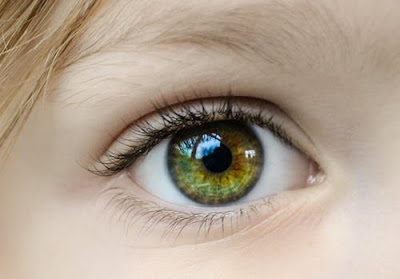Healthy eye? A look at nutrition
Sight is one of the five senses that you can hardly do without: in this complex system, the eye is the main organ, a delicate instrument that requires regular checks by the ophthalmologist (ophthalmologist) to evaluate its proper functioning and the state of health
To keep your eyes healthy you need to pay particular attention to how we behave and what we eat.
Bad habits can in fact compromise our vision in the immediate or future.
Many eye problems
in fact, they can originate from nutritional deficiencies, especially of vitamins or minerals and, consequently, they can be prevented thanks to a varied diet rich in nutritional elements valuable for the eyes.
The nutrition necessary to keep our eyes healthy and improve our vision is a diet rich in vegetables (fruit and vegetables) and fish, with the daily and weekly frequency recommended by the guidelines of balanced nutrition, in particular for vitamins and minerals.
These foods are also recommended to prevent other pathologies, such as metabolic and cardiovascular diseases, but they also play a fundamental role for the well-being of our eyes: they improve visual acuity, help in case of eye fatigue and dry eyes, reduce the risk of glaucoma (one of the main causes of blindness) and of developing cataracts (one of the most frequent ocular pathologies), reaching to act also in the protection of the retina from oxidative damage and macular degeneration.
Nutrition for healthy eyes
Here is what should not be missing on our table to protect the eyes and improve eyesight.
Vitamin E.
Vitamin E is more present in foods such as: wheat germ oil, extra virgin olive oil and seeds in general, in nuts (almonds, hazelnuts, walnuts, etc.)
For greater absorption of vitamin E it is better to use raw oils.
Lutein and zeaxanthin.
They are carotenoids with antioxidant properties, organic pigments present in the plant world and the major constituents of the spotted pigment of the retina, a sort of filter that prevents harmful radiation, such as ultra violet rays, from damaging the tissue of the retina.
The antioxidant function reduces the risk of age-related diseases, such as macular degeneration.
The foods where these trace elements are most present are dark green leafy vegetables: spinach, watercress, basil, rocket, broccoli and green broccoli; it contains large quantities of paprika.
vitamin C
It is a water-soluble vitamin with a high antioxidant power, it fights free radicals that are enemies of cells.
This vitamin also appears to contribute to the function of the optic nerve cells.
The main sources of vitamin C are fruit: kiwis, strawberries and citrus fruits in general. Vegetables such as spicy red peppers, red, yellow and green peppers, turnip broccoli, vegetables such as rocket lettuce and raw spinach are also rich in it.
All foods containing the vitamin must be eaten raw and fresh, the vitamin deteriorates with light and in water.
Vitamin A (and its beta-carotene precursor).
Responsible for twilight vision, it helps to see in the penumbra, the deficiency is associated with night blindness and dry eyes.
The foods that mostly contain it are of animal origin such as the liver, offal, milk and derivatives such as Grana Padano, eggs, fish, yellow-orange fruit and vegetables (carrots, squash, apricots, peaches, etc. .) and dark green leaf.
Vitamin B2
The best source of this vitamin is milk and its derivatives such as Grana Padano, it is also found in yeast, whole wheat, green leafy vegetables, legumes and eggs.
Omega 3.
Omega 3 are involved in the repair processes of retinal cells worn by excessive use of the eyes and age, among these fatty acids is DHA which promotes neuronal transmission and therefore the functionality of the optic nerve.
Their deficiency is associated with eye disorders and pathologies, such as dry eyes and macular degeneration.
The foods that contain the most omega 3 are blue fish (anchovies, sardines) salmon, wild trout; high quantities are found in nuts and in linseed oil and monoseme in general.
Zinc.
The foods that contain the most zinc are oysters, wheat germ, whole grains, liver, beer yeast; milk and derivatives such as Grana Padano and bitter cocoa (dark chocolate) are also an excellent source.
Anthocyanins.
Anthocyanins work by improving the blood circulation of the ocular capillaries, necessary to preserve the cornea and crystalline.
The foods that contain the most anthocyanins are purple-blue fruit and vegetables such as blueberries, black grapes, black plums, aubergines etc.
Habits for good eyesight
In addition to proper nutrition, here are some correct behaviors that promote vision protection.
Avoid sedentary lifestyle
Regularly carry out constant moderate physical activity, preferably aerobic which promotes circulation and brings nutrients into the microcirculation of the eyes.
Regular physical activity protects the body from atherosclerosis, diabetes and hypertension, pathologies that seriously affect the health of the eyes.
Always protect yourself from UV rays with quality sunglasses.
Not only certified sunglasses but also prescription glasses and contact lenses.
Protect your eyes during activities in which they can be affected, for example while gardening or cycling.
Keep your weight under control, to prevent the development of cardiometabolic diseases such as hypertension, overweight and obesity.
Use quality products for eye make-up and avoid the pencil applied inside the eye
Even the eyes deserve some rest.
What is not good for the eyes
Keep contact lenses for longer than recommended. This habit in fact significantly increases the risk of cataracts and age-related macular degeneration.
Use expired eye drops. After 20 days from opening the bottle, it is good to throw them away because they oxidize and lose the necessary sterility.
Drink alcohol. An excessive intake of alcohol seems to favor an early onset of age-related macular degeneration













0 Comments